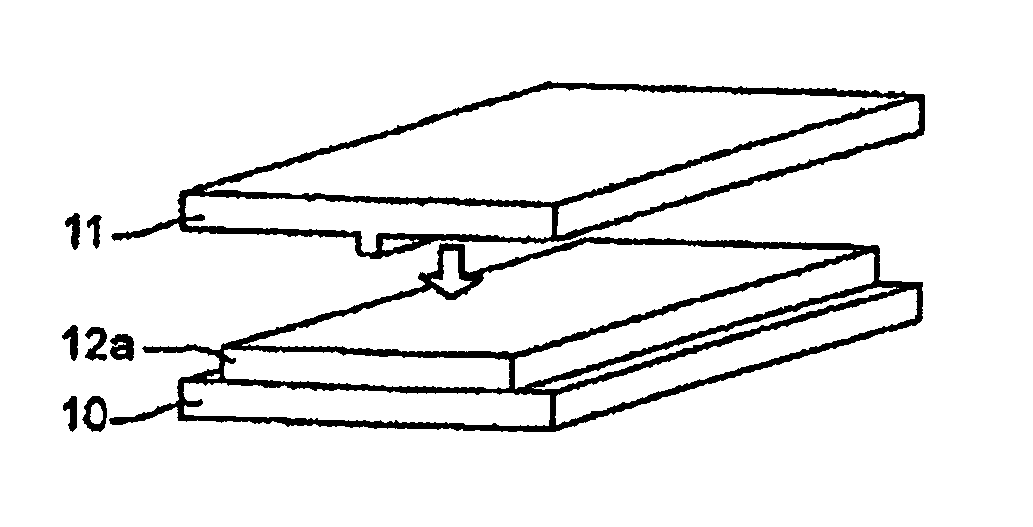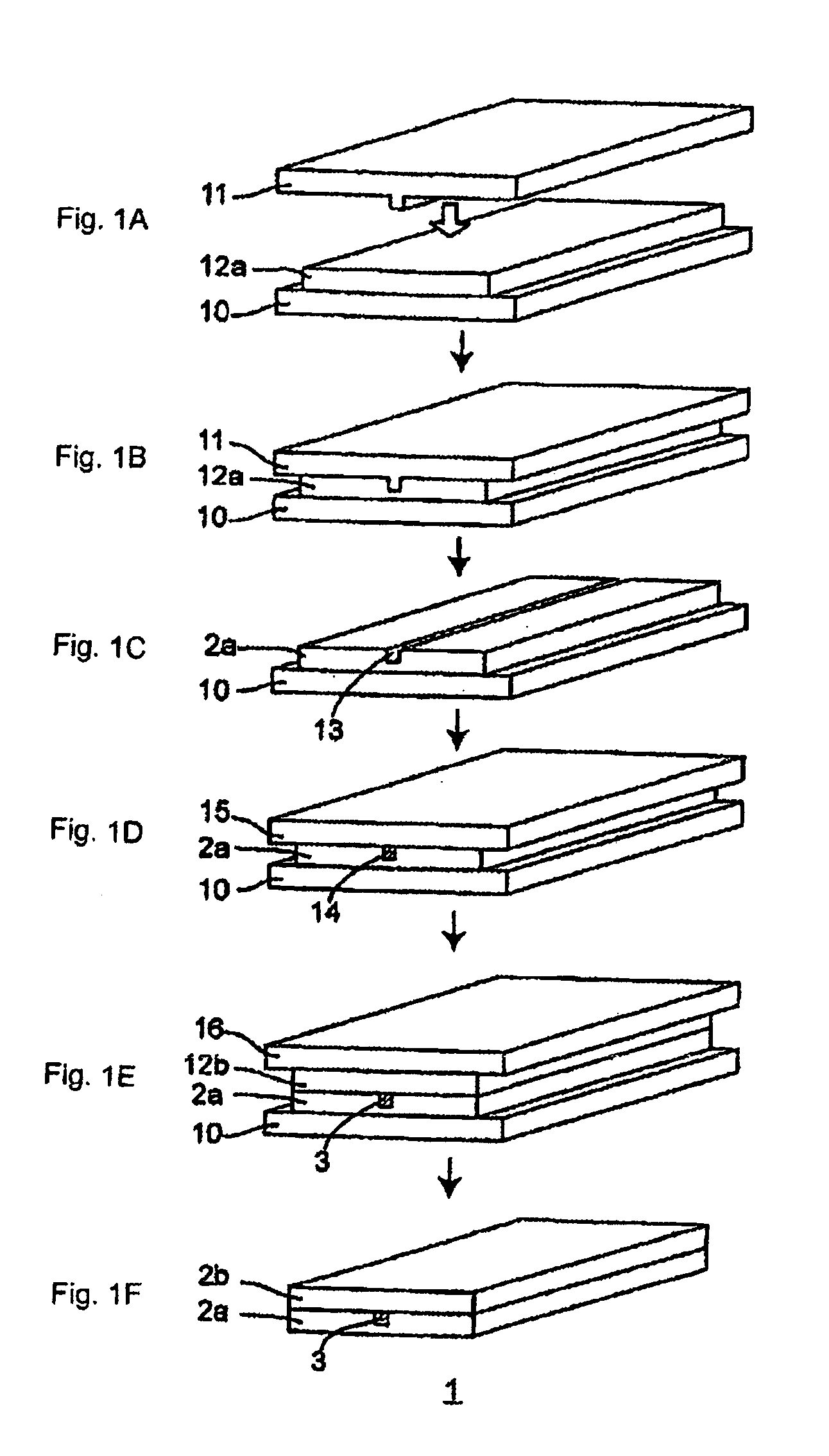Curable resin composition, optical component and optical waveguide
a technology of curing resin and optical waveguide, which is applied in the direction of optical waveguide light guide, optical elements, instruments, etc., can solve the problems of poor heat resistance, deformation and color, and large optical loss in the wavelength band used in light communication, and achieve superior heat resistance and a refractive index, and low optical loss. , the effect of superior stamper releasing property
- Summary
- Abstract
- Description
- Claims
- Application Information
AI Technical Summary
Benefits of technology
Problems solved by technology
Method used
Image
Examples
example 1
[0074]Dimethylol tricyclo[5.2.1.02,6]decane diacrylate (Tradename: Light Acrylate DCP-A, made by Kyoeisha Chemical Co., Ltd.)(7.000 g), perfluoro-octamethylene-1,8-bis(acryloyloxymethyl) (Tradename: Fluorolite FA-16, made by Kyoeisha Chemical Co., Ltd.)(3.000 g) and Darocure 1173 serving as a photo-polymerization initiator (made by Ciba Specialty Chemicals Corp.)(0.200 g) were mixed and dissolved to prepare a curable resin composition (I) of the present invention.
[0075]By using this curable resin composition (I), a photo-cured resin film was obtained through the above-mentioned method. The transparency of the resulting photo-cured resin film was excellent. The weight loss rate due to heat measured by the heat-resistance test conducted on the photo-cured resin film was less than 1%, ensuring a superior heat-resistant property. No coloring was found on the test pieces after the heat-resistance test. The deviations in refractive indexes were within a range of 1.4923±0.0003 so that a su...
example 2
[0086]By using a normally-used method in which 1,3-bis(carboxymethyl)tricyclo[3.3.1.13,7]decane (1,3-adamantane diacetic acid) (made by Tokyo Kasei Kogyo Co., Ltd.) and excessive 2-hydroxyethyl acrylate (Tradename: Light Ester HOA, made by Kyoeisha Chemical Co., Ltd.) were added to a toluene solvent and allowed to undergo an esterification reaction therein, and 2-hydroxyethyl acrylate that had not been reacted with the solvent was then distilled off, solid-state 1,3-bis(2-acryloyloxyethyloxy carbomethyl)tricyclo[3.3.1.13,7]decane was obtained.
[0087]The resulting 1,3-bis(2-acryloyloxyethyloxy carbomethyl)tricyclo[3.3.1.13,7]decane (6.000 g), perfluorotetramethylene-1,4-bis(acryloyloxymethyl) (Tradename: F06086D, made by AZmax Co., Ltd.)(3.500 g), 1,4-dimethylol cyclohexane diacrylate (0.500 g) and t-butylperoxy acetate (0.200 g) were mixed and dissolved to prepare a curable resin composition (II) of the present invention.
[0088]In the same manner as the preparation process of the test...
example 3
[0094]With respect to the optical waveguide, it is necessary to provide a difference in refractive indexes of about 0.50% between a core portion and a clad portion. The curable resin composition (I) relating to Example 1 was used as the core portion, and a curable resin composition (III), formed by mixing and dissolving 7.000 g of dimethylol tricyclo[5.2.1.02,6]decane diacrylate (the same as described earlier), 3.300 g of perfluoro-octamethylene-1,8-bis(acryloyloxymethyl) (the same as described earlier) and 0.206 g of Darocure 1173 (the same as described earlier), was used as the clad portion so that an optical waveguide was formed by using the following method.
[0095]After the curable resin composition (III) had been applied to a glass substrate, this was photo-cured (dose of ultraviolet-ray irradiation=3,000 mJ / cm2) with a convex-type stamper (metal mold: convex-type dimension=5 μm×5 μm×10 mm) being pressed thereon, and the convex-type stamper was released so that a lower clad port...
PUM
| Property | Measurement | Unit |
|---|---|---|
| temperature | aaaaa | aaaaa |
| temperature | aaaaa | aaaaa |
| decomposing temperature | aaaaa | aaaaa |
Abstract
Description
Claims
Application Information
 Login to View More
Login to View More - R&D
- Intellectual Property
- Life Sciences
- Materials
- Tech Scout
- Unparalleled Data Quality
- Higher Quality Content
- 60% Fewer Hallucinations
Browse by: Latest US Patents, China's latest patents, Technical Efficacy Thesaurus, Application Domain, Technology Topic, Popular Technical Reports.
© 2025 PatSnap. All rights reserved.Legal|Privacy policy|Modern Slavery Act Transparency Statement|Sitemap|About US| Contact US: help@patsnap.com


